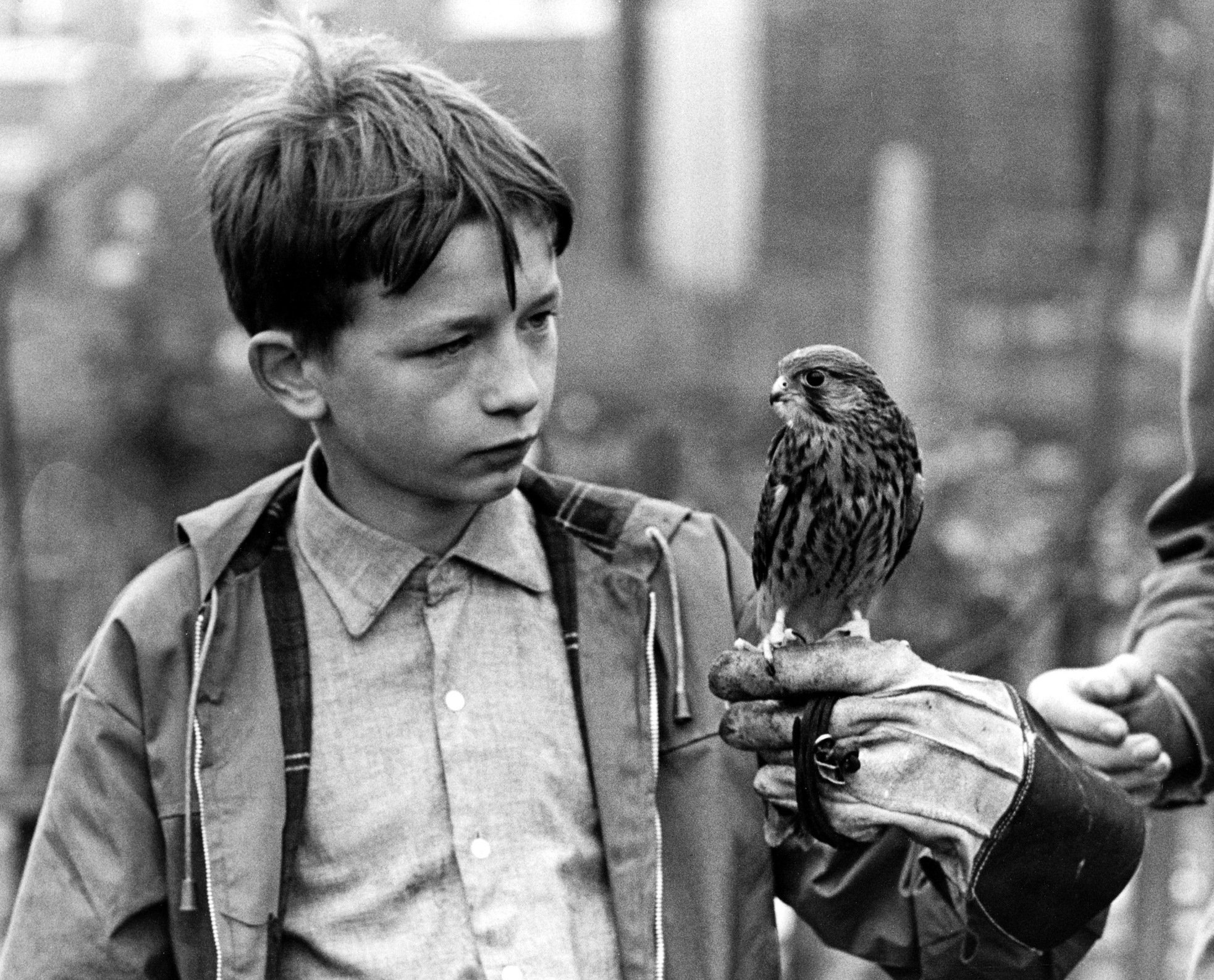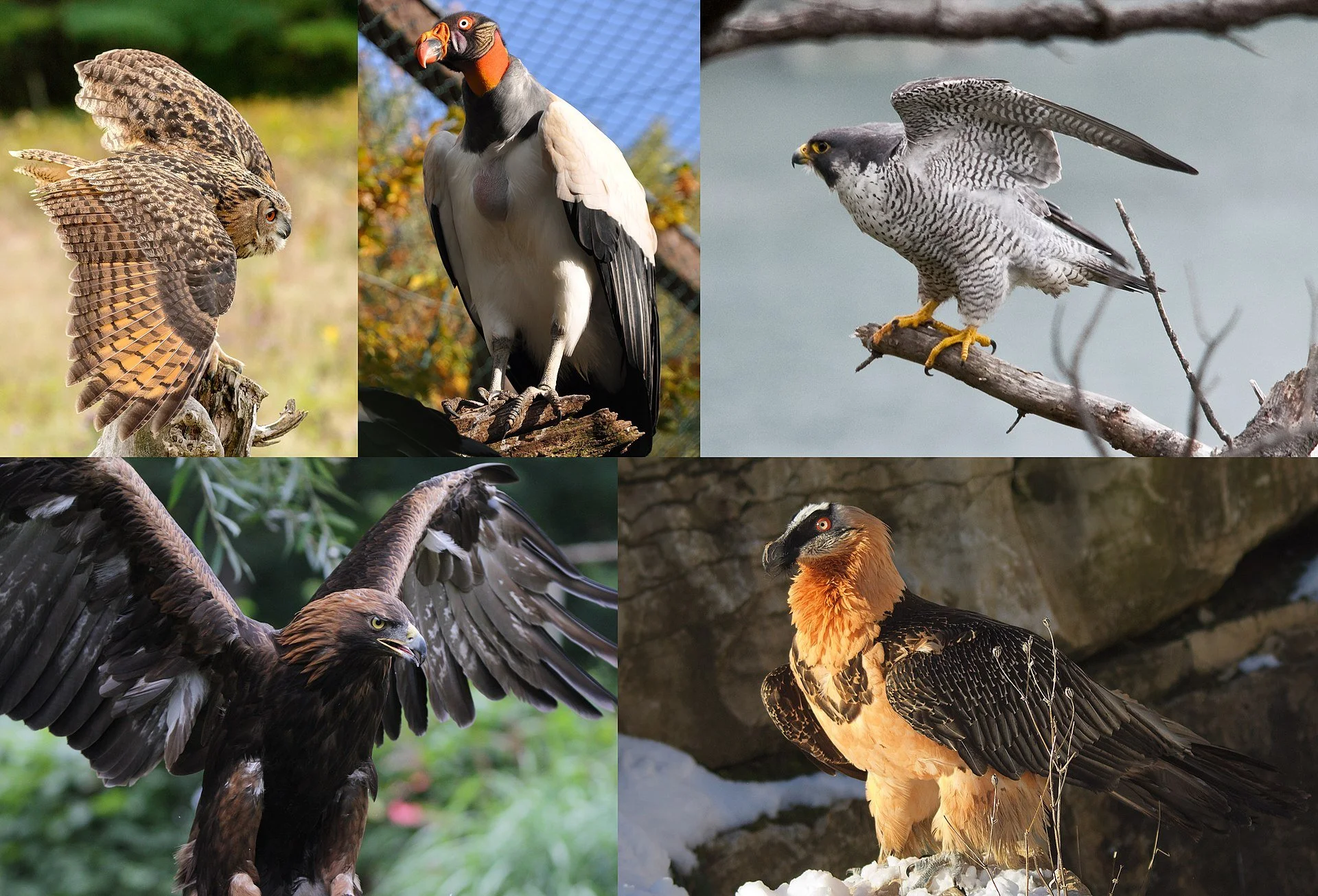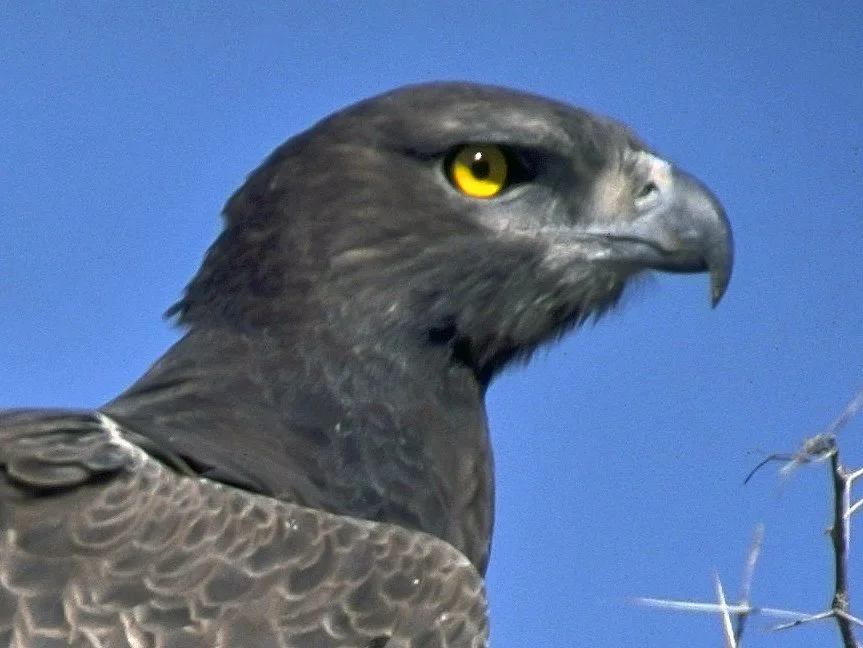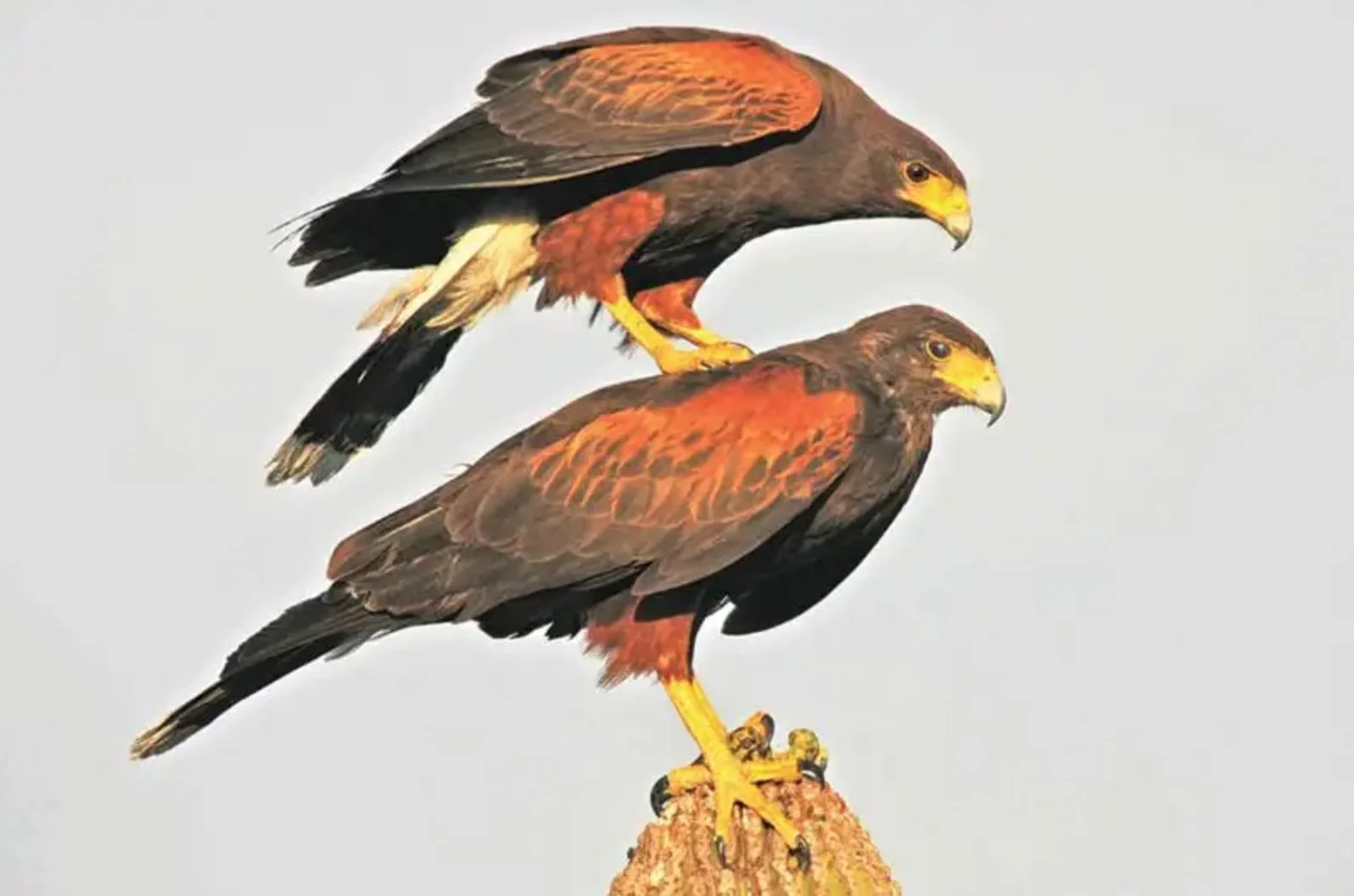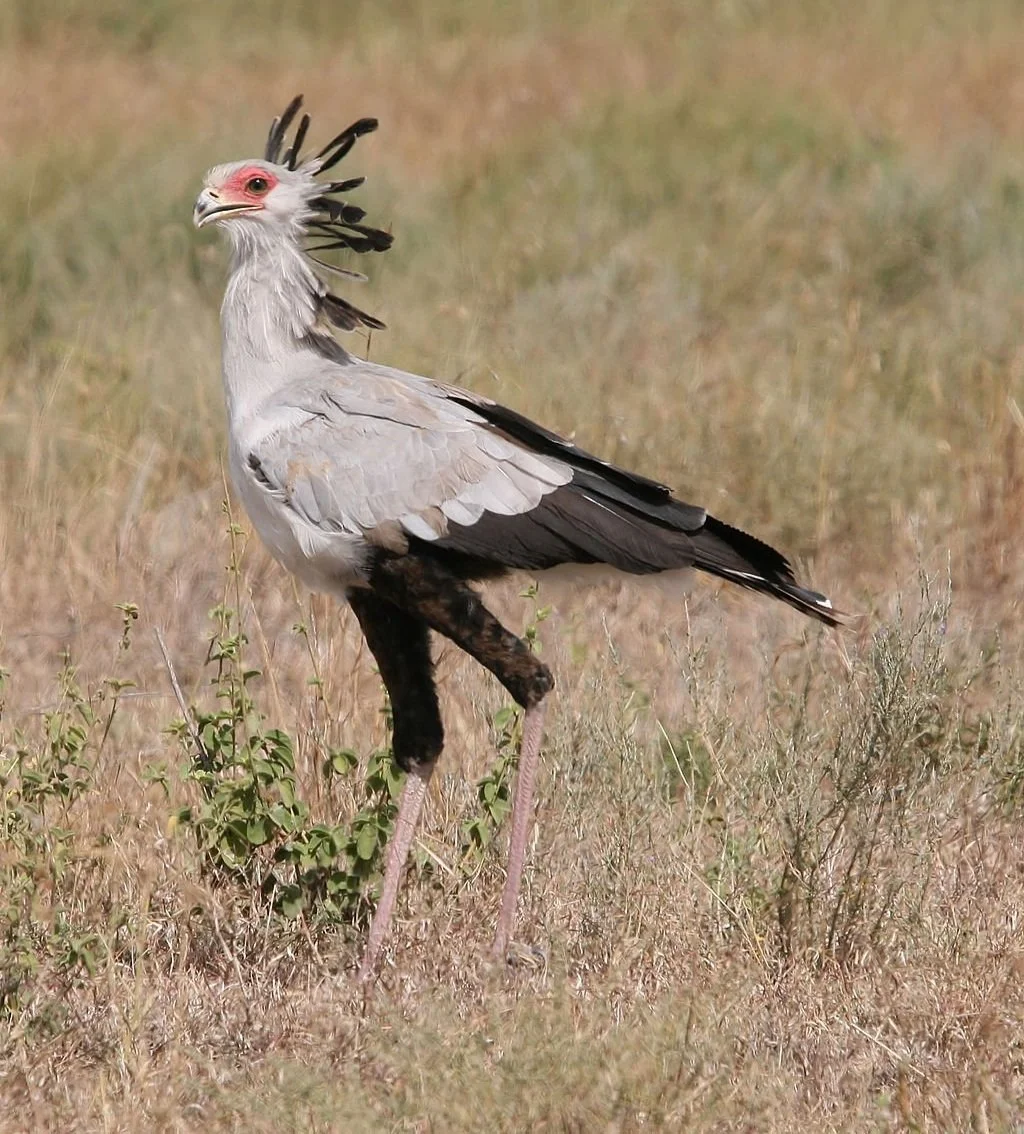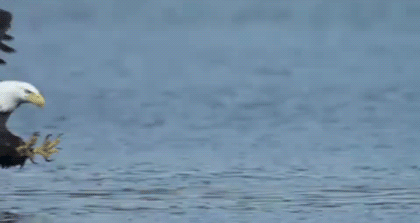By The Landlord
“It's not a pet, Sir, hawks are not pets. Or when folks stop me and say, "Is it tame?" Is it heck tame, it's trained that's all. It's fierce, and it's wild, an' it's not bothered about anybody, not even about me right. And that's why it's great.” – Billy Casper in Kes (1969) and from Barry Hines’ A Kestrel for a Knave (1968)
“The falcon cannot hear the falconer.” – William Butler Yeats
“The silence holds with its gloved hand the wild hawk of the mind.” – R. S. Thomas
“Don't look down, it's an impossible view; fly like an eagle whatever you do.” – Mos Def
“I am the hawk and there's blood in my feathers, but time is still turning, they soon will be dry. And all those who see me and all who believe in me, share in the freedom I feel when I fly.” – John Denver
“And when I look again she seems neither bird nor reptile, but a creature shaped by a million years of evolution for a life she's not yet lived …
I think of what wild animals are in our imaginations. And how they are disappearing — not just from the wild, but from people’s everyday lives, replaced by images of themselves in print and on screen. The rarer they get, the fewer meanings animals can have. Eventually rarity is all they are made of. The condor is an icon of extinction. There’s little else to it now but being the last of its kind. And in this lies the diminution of the world. How can you love something, how can you fight to protect it, if all it means is loss?” – Helen Macdonald, H is for Hawk (2014)
Ever feel like something sinister and deadly is circling above? That things are hotting up, there's a bad smell brewing, a rot setting in? Or that something extraordinary, and potentially fatal, is about to swoop down on us all very fast, without warning? It's a sign of the times.
Planet Earth's slightly misshapen spinning spheroid tends to create a history of repeating patterns where what goes around, then tears ravenously around again. And as this weekend approaches, one that includes international human events such as Earth Day, with shocking new data, news, and protests focusing on the future of our planet and climate change, we can also reflect on another dominant species that got a bit too big for its environment a long time ago, albeit outside forces, not their own doing led to their downfall. The next big extinction event might be looming, but at least dinosaurs were the evolutionary ancestors of this week's subject, hopefully with time to take flight into a song-and-playlist theme
What will be our evolutionary relic? Presumably not gracefully feathered, taloned, sharp-eyed, soaring machines who scan and swoop through sky, sea and earth? Perhaps more likely overweight, bespectacled thumb-beak creatures who instead prowl the internet?
But now to the topic. Birds in general have been flown over in the past, as well as last year, owls. But what is a raptor? Thanks to films such as Jurassic Park, a stock, slightly incorrect answer might indeed still be some fast running, agile, clever species of dinosaur (velociraptor), but that's not the case, especially for this week's theme. Raptors are a particular term for birds of prey, those that inherited some of those past features - particularly sharp talons and also powerful meat-tearing hooked beaks, and, many with sharp senses, rapid flight with a majestic spread of huge wings, are often apex sky predators, hunt small mammals such as rodents, fish, other birds, reptiles and more, with the word rapture coming from the Latin raptere for “to grasp or seize violently”.
So, that includes many species of hawks, eagles, falcons, kestrels, kites, ospreys, buzzards, harriers and more birds of this type, as well as the scavengers with similar physical features - vultures, sea eagles and condors. Owls are also raptors, night specialists, though as mentioned, we've covered them in their own separate topic resulting in these wise playlists.
A selection of raptors that might feature this wek, including, from top left to right, eurasian eagle-owl, king vulture, peregrine falcon, golden eagle and bearded vulture
It would be tempting to include as “birds of prey” many other species that eat smaller non-vertebrate living things such as worms or snails, as well as small fish, from the kingfisher, heron, or gull, or penguin, but let's cling solely on on such highly talon-ted, swooping, gliding, hunting birds as defined above, expressed in the music and/or in lyrics, making a dominant or significant focus of the song, whether literally, or metaphorically, not merely in passing reference such as 'eagle-eyed' or 'hawk-like'.
Raptors tend to nest in very elevated places - eyries, elevated treetops, mountaintops, above cliffs, and and even adapting to city life, on high rises and cathedrals. They are birds we literally and metaphorically look up to. Also what's exciting about raptors is how they are extreme, record-breaking birds – often the biggest, fastest, sharpest, and deadliest. Many have behavioural traits in common - gliding effortlessly high on thermals such as the condor, or with hovering watchfulness like the kestrel, then swooping fast for prey, or being very keen eyed, such as the martial eagle, with eyes more than twice the size of than the human eye, and a visual acuity up to eight times better.
The martial eagle is as eagle-eyed as it gets
Meanwhile the turkey vulture's sense of smell is so acute it can sense carrion more than a mile away, and, perhaps ironically scientific name in Latin, Cathartes aura, means, inversely “cleansing breeze”.
The eurasian hobby is in the top four fastest birds, hitting speeds in excess of 160 km/h, and is matched by a sole non-raptor, the swift-like white-throated needletail, but both lag behind golden eagle, who can hit 240–320 km/h. But nothing quite matches the peregrine falcon, who can descend at nearly 400 km/h (240 mph), far exceeding terminal velocity with its sheer power and wing shape. Weighing more than a bag of sugar (1.5kg), imagine being a pigeon suddenly hit by that?
Peregrine falcon taking a vertical dive
Like crows, which are debatably also raptors as they share some features, but are really from the corvid family as they are more omnivores, some species of raptors are highly intelligent. Unlike many of their solitary cousins, harris hawks ((Parabuteo unicinctus) are known to hunt in packs, employing all kinds of tricks such as flushing out prey from bushes, being each others' wingmen, blocking exits, and even "backstanding” in which two or three hawks will stand on each other, resembling a totem pole in order to get a better vantage point to spot prey. Careful with those talons, brother!
Harris hawks work together for extra vantage
But there are also eccentrics of the raptor world that use other talents to go with their talons. The highly plumed, almost comical looking secretary bird (sagittarius serpentarius) can fly high and swoop like others with a wide wingspan, but chooses, mainly with its oddball, stilt-like long legs, and standing around a metre high, to stalk upright around on on grasslands and savannahs of its native sub-Saharan Africa, viciously kicking its main prey, often venomous snakes to sudden death, with a force six times its body weight and at a frightening speed. It, and parallel South American species, the seriemas, are perhaps descendants of the extinct, very scary and aptly named terror birds, eight foot-tall dinosaur like birds who walked the author like some kind of monstrous deadly headteacher preying on pupils.
Secretary bird: a raptor that prefers to give its prey a good kicking
Many raptors have been threatened close to, or beyond extinction, by human activity from violent persecution to egg collecting and pesticides, the effects of which, especially now, move up through the food chain and can destroy the reproductive process. Humans have long had a strange relationship with raptors, a love-hate of awe and intimidation.
From mythical beasts such as the elephant bird, to the reality of bald eagle and some other species to carry off sheep or young deer, or the crowned eagle, the only species known to occasionally attack humans, raptors have nevertheless far more been friend to us than foe, keeping the rodent population down. Humans often seem like the inferior, envious, admiring underlings, the wannabe raptors. Countries from the US to Germany to Italy have adopted raptors as their powerful, intimidating emblem, and military aircraft have adopted names to emulate speed and deadliness.
So as well as the sights and sounds of raptors in songs, a particularly rich area, one that will hopefully come up in your suggestions, is where they have an emotional impact, inspiring a mix fear and wonder. There's a strong contrast at play, between raptors' clear purpose as opposed human confusion and indirection, and especially where a complex relationship is captured in lyrics. This is a long pattern through history between humans and such birds, where falconers have formed a fragile hunting bird relationships have formed. I once went to a falconer demonstration where among several species, including eagles, one of the birds just decided to fly off and do its own thing for several hours. A bit embarrassing for the trainer.
On that score, Helen Macdonald's book, H is for Hawk (2014) is a wonderful cross-genre mix of memoir, nature-study and biography, looking closely into the secret life of TH White, author of The Goshawk (1951). But in particular it focuses on the year she spent training a northern goshawk in the wake of her father's sudden death as way to find meaning through a passage of grief. The book is packed with supremely sharp descriptions and observations on everything from training to evolution such as: “Hawks have a flying weight, just as boxers have a fighting weight. A hawk that’s too fat, or high, has little interest in flying, and won’t return to the falconer’s call. Or: “Wild things are made from human histories;” and “The hawk is on my fist. Thirty ounces of death in a feathered jacket; a being whose world is drawn in plots and vectors that pull her towards lives' ends.”
But perhaps among her most telling moments on human relationship with these birds comes here:
“The hawk was everything I wanted to be: solitary, self-possessed, free from grief, and numb to the hurts of human life.”
This is also,perhaps where it runs parallel with Ken Loach's early masterpiece, Kes (1969), based on Barry Hines' 1968 novel A Kestrel for a Knave, in which a deeply unhappy, lonely, bullied schoolboy Billy Casper, who lives in a South Yorkshire mining community, finds meaning and direction, when he adopts a kestrel, manages to borrow a book from the library about training it. It's a film that even now makes me laugh and cry in equal measure, steeped in tragedy but also a sense of freedom, and filled with complex emotions shown on the melancholy face of young actor David Bradley.
So then, it's time to swoop down and get your claws into this topic, and hopefully, receive, er, raptor-ous applause. Skilled musical falconer-in-chief this week is the nifty and knowledgeable Nicko! What will he pick, or should I say, peck? Place your songs in comments below for the deadline on Monday at 11pm UK time, for playlists published next week. Let your imagination take flight and hunt high and low ...
Get in feet first …
New to comment? It is quick and easy. You just need to login to Disqus once. All is explained in About/FAQs ...
Fancy a turn behind the pumps at The Song Bar? Care to choose a playlist from songs nominated and write something about it? Then feel free to contact The Song Bar here, or try the usual email address. Also please follow us social media: Song Bar Twitter, Song Bar Facebook. Song Bar YouTube, and Song Bar Instagram. Please subscribe, follow and share.
Song Bar is non-profit and is simply about sharing great music. We don’t do clickbait or advertisements. Please make any donation to help keep the Bar running:

